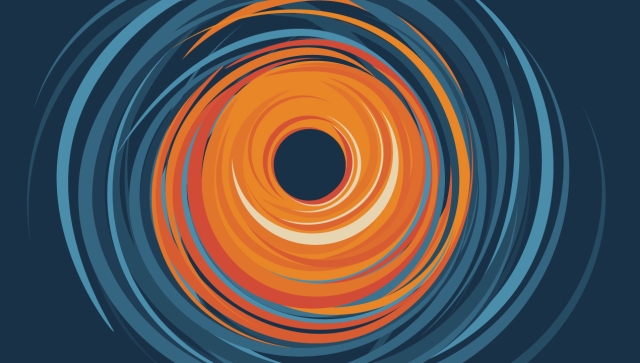
Twisted holography meets celestial holography
In 1998, physicist Juan Maldacena introduced one of the most influential ideas to emerge out of string theory in the last half-century: the anti-de Sitter (AdS)/conformal field theory (CFT) correspondence.
If you’ve ever heard the sci-fi sounding idea that the universe might be a hologram, that idea comes from AdS/CFT. It is a unique model of a universe in which there is a ‘holographic’ connection between Einstein’s theory of gravity in 3D, and quantum field theory in 2D. Just like the label on a soup can describes the internal contents of the soup, gravitational interactions within the universe can be described mathematically by a field theory on the universe’s ‘boundary.’
This was a surprising proposal because gravity and quantum physics don’t usually play nice together. Unifying them would be akin to finding the holy grail of physics.
In the years since, physicists have attempted to mathematically define the AdS/CFT correspondence more rigorously. Kevin Costello, who holds the Krembil William Rowan Hamilton Chair in Theoretical Physics at Perimeter, initiated a program carried out jointly with Davide Gaiotto, Krembil Galileo Galilei Chair in Theoretical Physics, along with visiting fellows Si Li and Natalie Paquette, to formulate AdS/CFT in rigorous mathematical terms.
They did so by drawing on ‘twistor theory,’ which first originated in the work of Nobel laureate Roger Penrose, where geometric points in space are replaced by ‘twistors’ resembling stretched-out rays that form the fabric of spacetime.
Combining the mathematical beauty of twistor theory with AdS/CFT has led to a new area of research called ‘twisted holography,’ and it has proved to be a powerful new mathematical alphabet for defining the duality.
Using it, Costello and Li we able to show that the Green-Schwarz mechanism (a fundamental piece of string theory) holds true in the twisted setting. Costello and Gaiotto then proved that this mathematical formulation of holographic duality is correct for the fundamental example of holography: maximally supersymmetric four-dimensional Yang-Mills theory.
AdS/CFT, as influential as it is, has shortcomings – mainly because it does not describe a ‘flat’ universe like the one we inhabit, but rather a negatively-curved one. Recent efforts by physicists like Andrew Strominger have tried to find a version of holography that works in the real universe. Dubbed ‘celestial holography,’ it is an ambitious project. Perimeter Institute researchers, including Costello, Sabrina Pasterski, and Laurent Friedel, have been at the forefront of this effort.
It turns out, twisted holography seems likely to be part of the solution. Costello, Paquette, and Atul Sharma have shown that twisted holography is related to celestial holography using Penrose’s twistor space as an intermediate step, allowing twisted holography techniques to be applied to systems that look much more like the real universe we live in. On the long and winding road to unifying gravity and quantum mechanics, twisted holography is offering a promising path forward.
Anomaly cancellation in the topological string, K. Costello and S. Li, [1905.09269 [hep-th]].
Twisted holography, K. Costello and D. Gaiotto, [1812.09257 [hep-th]].
Giant gravitons in twisted holography, Kasia Budzik and Davide Gaiotto, [2106.14859 [hep-th]].
Twisted holography without conformal symmetry, K. Budzik and D. Gaiotto, [2211.01419 [hep-th]].
Celestial holography meets twisted holography: 4d amplitudes from chiral correlators, Kevin Costello and Natalie M. Paquette, J. High Energ. Phys. 2022 (2022) 193, [2201.02595 [hep-th]].
On the associativity of one-loop corrections to the celestial OPE, Kevin Costello and Natalie M. Paquette, [2204.05301 [hep-th]].
Top-down holography in an asymptotically flat spacetime, Kevin Costello, Natalie M. Paquette and Atul Sharma, [2208.14233 [hep-th]].
On the associativity of 1-loop corrections to the celestial operator product in gravity, Roland Bittleston, [2211.06417 [hep-th]].
Twisted eleven-dimensional supergravity, Surya Raghavendran, Ingmar Saberi and Brian R. Williams, [2111.03049 [math-ph]].
Lectures on celestial amplitudes, S. Pasterski, Eur. Phys. J. C 81 (2021) 1062, [2108.04801 [hep-th]] [TOPCITE 50+].
Celestial holography, Sabrina Pasterski, Monica Pate and Ana-Maria Raclariu, [2111.11392 [hep-th]].
Evidence for a new soft graviton theorem, F. Cachazo and A. Strominger, [1404.4091 [hep-th]] [TOPCITE 250+].
Semiclassical Virasoro symmetry of the quantum gravity S-matrix, D. Kapec, V. Lysov, S. Pasterski and A. Strominger, J. High Energ. Phys. 2014 (2014) 58, [1406.3312 [hep-th]] [TOPCITE 250+].
New gravitational memories, S. Pasterski, A. Strominger and A. Zhiboedov, J. High Energ. Phys. 2016 (2016) 53, [1502.06120 [hep-th]] [TOPCITE 100+].
Flat space amplitudes and conformal symmetry of the celestial sphere, S. Pasterski, S.H. Shao and A. Strominger, Phys. Rev. D 96 (2017) 065026, [1701.00049 [hep-th]] [TOPCITE 100+].
Conformal basis for flat space amplitudes, S. Pasterski and S.H. Shao, Phys. Rev. D 96 (2017) 065022, [1705.01027] [TOPCITE 100+].
Conformally soft fermions, Y. Pano, S. Pasterski and A. Puhm, J. High Energ. Phys. 2021 (2021) 166, [2108.11422 [hep-th]].
Goldilocks modes and the three scattering bases, Laura Donnay, Sabrina Pasterski and Andrea Puhm, [2202.11127 [hep-th]].
Mapping SYK to the sky, Sabrina Pasterski and Herman Verlinde, J. High Energ. Phys. 2022 (2022) 47, [2201.05054 [hep-th]].
Chaos in celestial CFT, Sabrina Pasterski and Herman Verlinde, J. High Energ. Phys. 2022 (2022) 106, [2201.01630 [hep-th]].
A comment on loop corrections to the celestial stress tensor, Sabrina Pasterski, [2205.10901 [hep-th]].
A shorter path to celestial currents, Sabrina Pasterski, [2201.06805 [hep-th]].
Celestial geometry, Sebastian Mizera and Sabrina Pasterski, J. High Energ. Phys. 2022 (2022) 45, [2204.02505 [hep-th]].
Gravity from symmetry: duality and impulsive waves, Laurent Freidel and Daniele Pranzetti, J. High Energ. Phys. 2022 (2022) 125, [2109.06342 [hep-th]].
Higher spin dynamics in gravity and w(1+infinity) celestial symmetries, L. Freidel, D. Pranzetti and A.M. Raclariu, Phys. Rev. D 106 (2022) 086013, [2112.15573 [hep-th]].
Twisted supergravity and Koszul duality: A case study in AdS3, K. Costello and N.M. Paquette, Commun. Math. Phys. 384 (2021) 279–339, [2001.02177 [hep-th]].
Asymptotic symmetries and electromagnetic memory, S. Pasterski, J. High Energ. Phys. 2017 (2017) 154, [1505.00716 [hep-th]] [TOPCITE 50+].

Revealing the secrets of the Coulomb branch
To study fundamental particles of nature like quarks, photons, and electrons, physicists often turn to approximations of reality known as gauge theories. While gauge theories sometimes defy exact analytic descriptions, theories that adopt supersymmetry can be studied with exact results, and rigorous mathematical methods can be applied, proving incredibly useful to physicists.
In a supersymmetric gauge theory, the ground state (the lowest possible energy level of the system) can be varied continuously, like the roiling surface of boiling water. This is given a special name – the moduli space of vacua – and mathematically, it has two components, or “branches.” The first, the Higgs branch, is well described, whereas the second branch, the Coulomb branch, is more mysterious and relies on unusual order parameters called Dirac monopoles. Dirac monopoles are hard to scrutinize mathematically outside of specific circumstances, meaning there are many cases where no clear description of the Coulomb branch seemed possible.
In a breakthrough paper, Perimeter associate faculty member Alexander Braverman, along with Michael Finkelberg and Hiraku Nakajima, explained how to understand the Coulomb branch in terms of advanced topics in pure mathematics: an object called the affine Grassmannian, originally introduced to study the Langlands program in number theory. This paper has been highly influential in both pure mathematics and physics. It turns out that the study of the Coulomb branch of three-dimensional gauge theory gives a great deal of insight into representation theory and related topics.
This breakthrough has since sparked additional progress. For example, Perimeter associate faculty Ben Webster, alongside Tom Braden, Anthony Licata, and Nicholas Proudfoot, had predicted that there was a mathematical connection between the Higgs and Coulomb branches called (S)ymplectic duality. In particular, they showed that in many cases this would manifest a well-known phenomenon in representation theory called Koszul duality. Webster was able to show that this Koszul duality holds in all cases covered by Braverman’s result, and Perimeter research faculty members Kevin Costello and Davide Gaiotto, with Thomas Creutzig, then connected this approach to vertex operator algebras.
These are just a few of the new insights that a deeper understanding of the Coulomb branch has enabled, and the once-mysterious branch has, at last, revealed some of its secrets.
Braverman, A., Nakajima, H., & Finkelberg, M. (2016). Towards a mathematical definition of Coulomb branches of 3-dimensional N = 4 gauge theories, II. Adv. Theor. Math. Phys., 22 (arXiv:1601.03586), 1071–1147.
Bullimore, M., Dimofte, T., Gaiotto, D., Hilburn, J., & Kim, H. C. (2018). Vortices and Vermas. Advances in Theoretical and Mathematical Physics, 22(4), 803–917.
Braverman, A., Finkelberg, M., & Nakajima, H. (2019). Coulomb branches of 3-dimensional N = 4 quiver gauge theories and slices in the affine Grassmannian (with appendices by Alexander Braverman, Michael Finkelberg, Joel Kamnitzer, Ryosuke Kodera, Hiraku Nakajima, Ben Webster, and Alex Weekes). Adv. Theor. Math. Phys., 23(1), 75–166.
Costello, K., Creutzig, T., & Gaiotto, D. (2019). Higgs and Coulomb branches from vertex operator algebras. Journal of High Energy Physics, 2019(3), 66.
Costello, K., & Yagi, J. (2018). Unification of integrability in supersymmetric gauge theories. arXiv:1810.01970.
Braverman, A., Finkelberg, M., Nakajima, H. Towards a mathematical definition of Coulomb branches of 3-dimensional N = 4 gauge theories, II, Adv. Theor. Math. Phys. 22, 5 (2018) 1071, [arXiv:1601.03586] [Google Scholar Topcite 100+].
Bullimore, M., Dimofte, T., Gaiotto, D. The Coulomb branch of 3d N = 4 theories, [arXiv:1503.04817].
Braverman, A., Finkelberg, M., Nakajima, H. Coulomb branches of 3d N = 4 quiver gauge theories and slices in the affine Grassmannian, Adv. Theor. Math. Phys. 23, 1 (2019) 75, [arXiv:1604.03625].
LePage, E., & Webster, B. Rational Cherednik algebras of G(l,p,n) from the Coulomb perspective, [arXiv:1912.00046].
Gammage, B., McBreen, M., & Webster, B. Homological mirror symmetry for hypertoric varieties I, [arXiv:1804.10646].
Gammage, B., McBreen, M., & Webster, B. Homological mirror symmetry for hypertoric varieties II, [arXiv:1903.07928].
Webster, B. Coherent sheaves and quantum Coulomb branches I: Tilting bundles from integrable systems, [arXiv:1905.04623].
Kamnitzer, J., Tingley, P., Webster, B., Weekes, A., & Yacobi, O. On category O for affine Grassmannian slices and categorified tensor products, Proc. London Math. Soc. 119, 5 (2019) 1179, [arXiv:1806.07519].
Bullimore, M., Dimofte, T., Gaiotto, D., & Hilburn, J. Boundaries, mirror symmetry, and symplectic duality in 3d N = 4 gauge theory, J. High Energy Phys. 1610 (2016) 108, [arXiv:1603.08382].
Bullimore, M., Dimofte, T., Gaiotto, D., Hilburn, J., & Kim, H. C. Vortices and Vermas, Adv. Theor. Math. Phys. 22, 4 (2018) 803, [arXiv:1609.04406].
Braden, T., Licata, A., Proudfoot, N., & Webster, B. Quantizations of conical symplectic resolutions II: Category O and symplectic duality, [arXiv:1407.0964 [math.RT]].
Webster, B. Koszul duality between Higgs and Coulomb categories O, [arXiv:1611.06541 [math.RT]].
Dimofte, T., Garner, N., Geracie, M., & Hilburn, J. Mirror symmetry and line operators, J. High Energy Phys. 2002 (2020) 075, [arXiv:1908.00013 [hep-th]].
Hilburn, J., & Raskin, S. Tate’s thesis in the de Rham setting, [arXiv:2107.11325 [math.AG]].
Gammage, B., Hilburn, J., & Mazel-Gee, A. Perverse schobers and 3d mirror symmetry, [arXiv:2202.06833 [math.RT]].
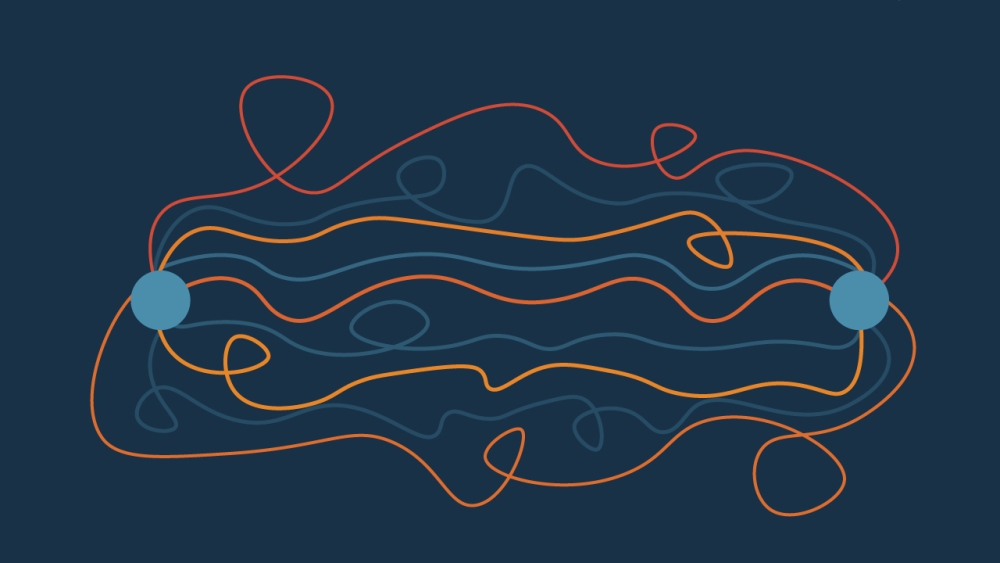
A breakthrough toward proving a longstanding conjecture: ‘elliptic genus’ and ‘topological modular forms.’
In the late 1980s, there were two related developments in physics and mathematics.
In physics, Edward Witten introduced the concept of ‘elliptic genus,’ which is an invariant – it remains unchanged when any kind of transformation is applied – of a two-dimensional supersymmetric field theory. It seemed like a useful tool for recognizing phases and phase transitions in quantum field theories.
In mathematics, Michael Hopkins and collaborators introduced the concept of ‘topological modular forms,’ powerful mathematical tools that play a central role in modern homotopy theory (understanding geometric regions by studying different paths that can be drawn between two fixed points).
While seemingly unconnected at first glance, mathematicians and physicists working together soon realized that the two developments might somehow be related. Hopkins, along with Graeme Segal, Stephan Stolz, and Peter Teichner, formulated a conjecture to this effect: Hopkin’s topological modular forms can be built by studying the ‘space’ or landscape of all possible two-dimensional supersymmetric field theories.
This conjecture is very deep from the point of view of both mathematics and physics. It shows that one of the most important objects in modern topology has its most natural manifestation in terms of physics. Despite a great deal of work in the mathematics community, the conjecture has remained wide open since it was first suggested, and a proof of this conjecture has been widely viewed as out of reach.
However, in 2018-19, the work of Theo Johnson-Freyd and Davide Gaiotto, partly joint with Edward Witten, finally provided a breakthrough toward solving this conjecture. They showed that the general conjecture has a number of very concrete and calculable consequences for two-dimensional supersymmetric field theories, which they went on to prove conclusively. This is the first truly concrete evidence that the conjecture is indeed true, and a major leap forward in a longstanding puzzle.
D. Gaiotto, T. Johnson-Freyd, Mock modularity and a secondary elliptic genus, [arXiv:1904.05788].
D. Gaiotto, T. Johnson-Freyd, E. Witten, A note on some minimally supersymmetric models in two dimensions, [arXiv:1902.10249].
D. Gaiotto, T. Johnson-Freyd, Holomorphic SCFTs with small index, [arXiv:1811.00589].
T. Johnson-Freyd, Supersymmetry and the Suzuki chain, [arXiv:1908.11012].
More Turning Points:
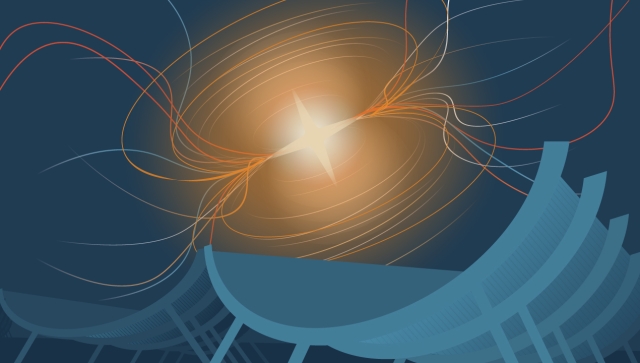
Cosmology

Mathematical Physics
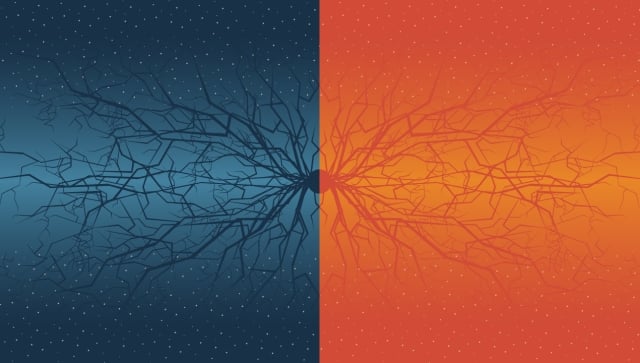
Particle Physics

Quantum Foundations
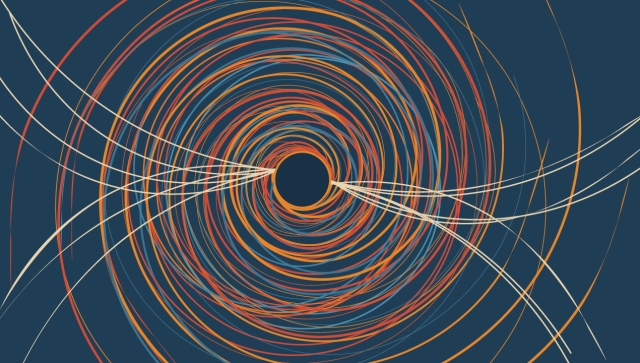
Quantum Fields and Strings

Quantum Gravity
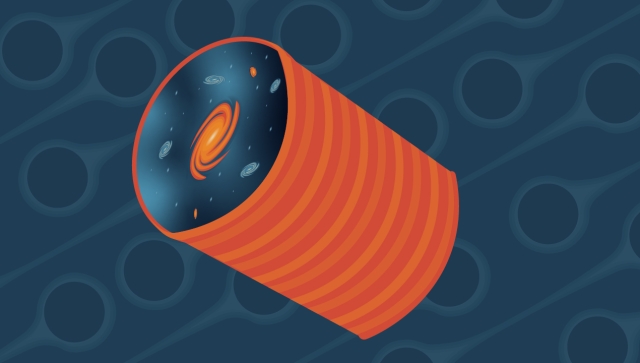
Quantum Information

Quantum Matter
